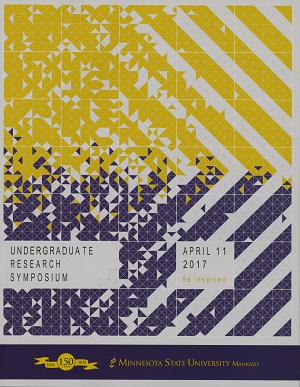Satirical Imagery of the Ramesside Period: A Socio-Historical Narrative
Location
CSU 201
Start Date
11-4-2017 1:05 PM
End Date
11-4-2017 2:05 PM
Student's Major
Art
Student's College
Arts and Humanities
Mentor's Name
Alisa Eimen
Mentor's Department
Art
Mentor's College
Arts and Humanities
Description
During a short period in New Kingdom Egypt (c. 1550-1070 BCE) artwork of an interesting nature was created in a small workers’ village called Deir el-Medina. These artworks often feature animals with human characteristics: mice dress as noblewomen, foxes play lutes, cats are geese herdsmen, and lions play board games. Satirical drawings, as they are referred to, were created by the craftsmen who decorated the tombs in the Valley of the Kings. These drawings poke fun at the rigid and formal decoration of imperial spaces. However, these artworks were more than comic relief for the artists; they also reflect the social and political atmosphere in Egypt from the eighteenth dynasty onward. The Ramesside period (c. 1292–1069 BCE), during which these images were made, was a time of diminishing pharaonic authority and growing economic uncertainty. The first organized workers’ strike in history was planned by the same artists who were creating satirical artworks. Although the strike was a success, the Ramesside period would continue to be plagued by administrative errors and instability. Satirical artworks provide insight into the historical, social and political atmosphere at the time of their creation, revealing a narrative of the artists who shaped the Valley of the Kings.
Satirical Imagery of the Ramesside Period: A Socio-Historical Narrative
CSU 201
During a short period in New Kingdom Egypt (c. 1550-1070 BCE) artwork of an interesting nature was created in a small workers’ village called Deir el-Medina. These artworks often feature animals with human characteristics: mice dress as noblewomen, foxes play lutes, cats are geese herdsmen, and lions play board games. Satirical drawings, as they are referred to, were created by the craftsmen who decorated the tombs in the Valley of the Kings. These drawings poke fun at the rigid and formal decoration of imperial spaces. However, these artworks were more than comic relief for the artists; they also reflect the social and political atmosphere in Egypt from the eighteenth dynasty onward. The Ramesside period (c. 1292–1069 BCE), during which these images were made, was a time of diminishing pharaonic authority and growing economic uncertainty. The first organized workers’ strike in history was planned by the same artists who were creating satirical artworks. Although the strike was a success, the Ramesside period would continue to be plagued by administrative errors and instability. Satirical artworks provide insight into the historical, social and political atmosphere at the time of their creation, revealing a narrative of the artists who shaped the Valley of the Kings.
Recommended Citation
Wardyn, Keely. "Satirical Imagery of the Ramesside Period: A Socio-Historical Narrative." Undergraduate Research Symposium, Mankato, MN, April 11, 2017.
https://cornerstone.lib.mnsu.edu/urs/2017/oral-session-08/1



